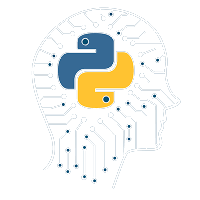
Machine Learning With Python
6 Months
Module - 1
Introduction to Python
- Introduction and History of Python
- Installing Python and setting Environment
- IDLE
- How to execute Python program
Python basics
- Python Tokens
- Keywords
- Literals
- Identifiers
- Operator
- Python statements
- Getting user input
Variables and Data Types
- Variables
- Numbers
- Strings
- Lists
- Tuple
- Dictionary
Decision Control Structure
- Control flow statements
- The IF statement
- Python Relational and Logical Operators
- The WHILE loop
- Break and Continue statement
- The FOR loop
- Pass statement
Functions
- Creating a function
- Calling a function
- Function with default values
- Calling function named arguments
- Built-in functions
Modules
- Introduction to Modules
- Creating modules
- Importing Modules
- Standard Modules
Files and Directories
- Introduction to File handling
- Writing and reading files
- Working with directories
Object Oriented Programming
- Introduction to OOPs
- Classes and Objects
- Instance methods
- Special class method
- Inheritance
- Method overriding
- Data Hiding
- Many more concepts...
Exception Handling
- What is Exception
- Try, except, finally and raise statements
- Handling Exception
Multi-Threading
- The Threading module
- Creating and executing new Thread
- Synchronizing Threads
GUI Programming
- Introduction to Tkinter
- Making window Object
- Working with widgets
- Label
- Button
- Entry
- RadioButton
- Checkbox
- Message
- Combobox
- Spin box
- Menu
- Scrollbar
- Canvas
- Many more
- Validating inputs
- Event handling
Database programming in Python
- Introduction to databases
- Creating database
- Making table
- Inserting, updating, removing and retrieving data from tables
- Intro to Python DB-API
- List of Supported DBMSs
- Connecting to database
- Executing queries
- Fetching data from database table
- Handling Transactions
Module - 2
Introduction to RDBMS & Microsoft SQL Server
- RDBMS
- Microsoft SQL-Server
- Edition of Microsoft SQL-Server
- SQL Server Installation
Basics of RDBMS
- Databases
- System Databases
- User Database
- Database Objects
- Tables
- SQL
- DDL
- DML
- DCL
- TCL
DDL Statements & Constraints
- Data Types
- Creating and Altering Tables
- Dropping Tables
- Viewing Existing Tables
- Constraints
- Not Null
- Primary Key
- Unique
- Check
- Foreign Key
DML Statements and Operators
- Insert
- Update
- Delete
- Select
- SQL Operators (Clauses)
- Distinct
- Where
- AND & OR
- IN & NOT IN
- Between & Not Between
- Is Null & Is Not Null
- Compute
- Top
- With Tie
Joins
- Data Redundancy
- Normalization
- Joins
- Inner Join
- Outer Join
- Left Outer Join
- Right Outer Join
- Self Join
- Cross Join
Sub - Queries
- Introduction to Sub-Quries
- IN and NOT IN Operators
- ALL and ANY Operators
- Coorelate Query
Aggregate Functions
- Aggregate Functions
- Sum
- Max
- Min
- Avg
- Count
- Group By and Having Clauses
- IsNull
Views
- Introduction to Views
- Types of Views
- Simple Views
- Complex Views
- Partitioned View
- Distribution Partition View
- Benefits of Views
- Creating and Managing Views
Stored Procedures
- Introduction to Stored Procedures
- Type of Stored Procedures
- System Stored Procedures
- Extended Stored Procedures
- User Defined Stored Procedures
- Advantages of Stored Procedures
- Creating and Managing Stored Procedures
Triggers
- Introduction to Triggers
- Types of Triggers
- DML Triggers
- Before Triggers
- After Triggers
- DDL Triggers
- Login Triggers
- DML Triggers
- Creating and Managing Triggers
Indexes
- Introduction to Indexes
- Types of Indexes
- Clustered
- Non-Clustered
- Creating and Managing Indexes
Cursors
- Introduction to Cursors
- Types of Cursors
- Life Cycle of Cursor
- Creating and Managing Cursor
Logins, Users and Roles
- Introduction to DCL
- What are Logins, Users and Roles?
- Creating Login, Users and Roles
- Granting and Revoking Privileges
- Assigning Roles to Users
Module - 3
Introduction to Machine Learning
- Applications of Machine Learning
- Supervised VS Unsupervised Learning
- Python libraries suitable for Machine Learning
Supervised Machine Learning
- Supervised Machine Learning
- Regression
- Classification
- K-Nearest Neighbours
Unsupervised Machine Learning
- Intro to Unsupervised Machine Learning
- Clustering
- K-Means Clustering
- Hierarchical Clustering
- Association
- Market Basket Analysis
Reinforcement Machine Learning
- Introduction to Reinforcement Machine Learning
- R-ML Application